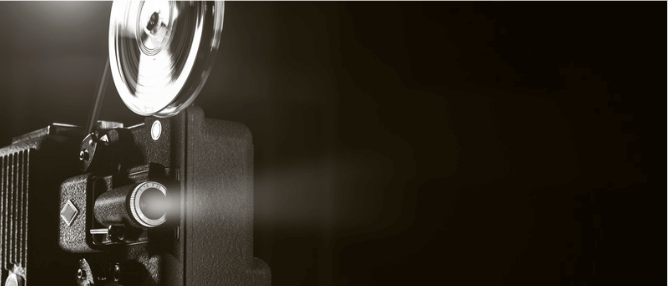COMEDY COURSE HOME | COMEDY BASICS | COMEDY WRITING | COMEDY PERFORMANCE | THE COMEDY BUSINESS | PRO COMEDIAN TIPS | HISTORY OF COMEDY | OTHER RESOURCES & MISC BITS

Click HERE for the course intro and other chapters:
We hope you had a fantastic Open Mic week, filled with both learning and laughter. As we continue our journey in the world of comedy, let’s shift our focus to the art of performance, an essential aspect of delivering a memorable and hilarious act.

Last week, we discussed the importance of improving joke writing. Now, let’s delve deeper into the intricacies of performance. When working on your Performance Goal, remember to focus on one element at a time. Whether it’s incorporating more smiles, using natural body language, or perfecting your timing, giving dedicated attention to each aspect will help you master it faster.
Imagine your Performance Goal is to smile more on stage. While it may seem simple, consciously practicing this during your sets can be quite challenging at first. You might find yourself wrestling with other thoughts like remembering your jokes and delivering them flawlessly. But keep at it. The goal is to make the desired behaviour automatic, transforming what initially requires conscious effort into a seamless part of your act.
Throughout your career, always strive to strengthen different performance elements. As comedians, we are continually evolving, and our acts should reflect that growth. Experiment with new styles, gestures, or expressions that complement your comedic persona. Embrace change and don’t be afraid to take risks. Just like great athletes constantly add new moves to their repertoire, a comedian can continuously enhance their act.

Identifying when a performance element has become automatic often comes as a gut feeling. You’ll notice that you effortlessly incorporate the behaviour into your routine without conscious reminders. But if you’re someone who prefers tangible evidence, try recording yourself. By comparing your progress before and after working on a specific goal, you can see the transformation firsthand.
As comedians, we have a unique relationship with our audience. Your performance is a conversation with everyone in the crowd. Eye contact and personal attention create a powerful connection. Engage with your audience, and let them feel seen and heard. Their responses will give you real-time feedback on how well your act is resonating.
However, it’s essential to avoid falling into autopilot during your performance. When you find your mind drifting away from the moment, make a conscious effort to reconnect with your material. Remind yourself of the excitement and passion that led you to write those jokes in the first place. An invested performer creates an engaged audience, leading to more laughter and a memorable experience for everyone.

Stand-up comedy is a dynamic and ever-evolving art form. Embrace change, refine your performance, and be open to trying new things. With dedication and continuous improvement, you’ll witness the growth and success of your comedy career.

Make sure to capture your sets on video this week if you can manage it. Alternatively, if recording is not possible, make it a point to jot down detailed notes about each joke in your setlist right after your performance. Take some time to review your best set of the week.
Now, reflect on the questions you previously asked after watching the Greg Giraldo video during week one, but this time, focus solely on your own act. Skip the questions that do not apply to self-evaluation. Then, inquire:
Use these insights to determine the next element of your act that you will concentrate on refining until it becomes second nature.

Task 2: Judge Others

During your next Open Mic night, take the time to observe every comic closely. For each performer, consider the following:
The objective here is to expose yourself to a wide range of performance elements that you can potentially incorporate into your own act. Along with the list you compiled from last week’s video segment, these observations should provide you with an extensive pool of ideas to work on and develop over the years.


Prepare your sets for this week’s Open Mic events as you have done in the past few weeks. Approach each performance as usual. Prior to going on stage for each set, take a moment to clear your mind and repeat the following affirmations:
These affirmations will help you focus and boost your confidence, ensuring that you give your best performance and progress in achieving your performance goals.


Check out these videos:
1. Bernie Mac Deaf Jam
2. Maria Bamford, Paula Deen
After watching these videos, think about the following questions from week one of your comedy journey. With thirteen different stand-up approaches to consider, which comedians stood out as your favorites?
What made them particularly funny compared to the others? Can you identify a comedian whose style aligns closely with your ideal version of your act? What aspects of their performance appeal to you, and why? On the other hand, which approach did you find least appealing, and what elements of their act turned you off?
Watch Bernie Mac’s set where he faced a hostile crowd after the previous comedian was booed off stage. Notice how Bernie turns the situation around and wins the audience over. Pay attention to the jokes he selects and their length. How does his joke selection help in winning the crowd? Additionally, observe how he uses the DJ to his advantage.
Maria Bamford’s set is intriguing when you follow her eyes throughout her performance. Notice how often she looks at different people in the crowd. Maria does three distinct voices during her act, including one as Paula Deen.
Consider the purpose of her second voice and how it reduces setup lines in her jokes while embodying the premise of the joke. Try to understand the point of view this voice represents and how it reflects Maria’s feelings about cooking.
Maria Bamford manages to get at least four, possibly five, laughs purely from performance elements without saying a word in English. Take note of these instances and analyse what she does to get each laugh. How do these elements contribute to the comedy, and how do they allow her to minimise setup lines?
Finally, observe how Maria punctuates and highlights emotions for herself and the two character voices she portrays—both verbally and through performance elements.
Understanding these techniques and styles can help you refine your own comedic sensibility and identify what resonates with you and your audience.
This is an adaptation of the free 12 week course Jon Roy offers HERE

Learn more about the Comedy Basics here

Bookings for our Bar on the Southbank, SE1 Baby